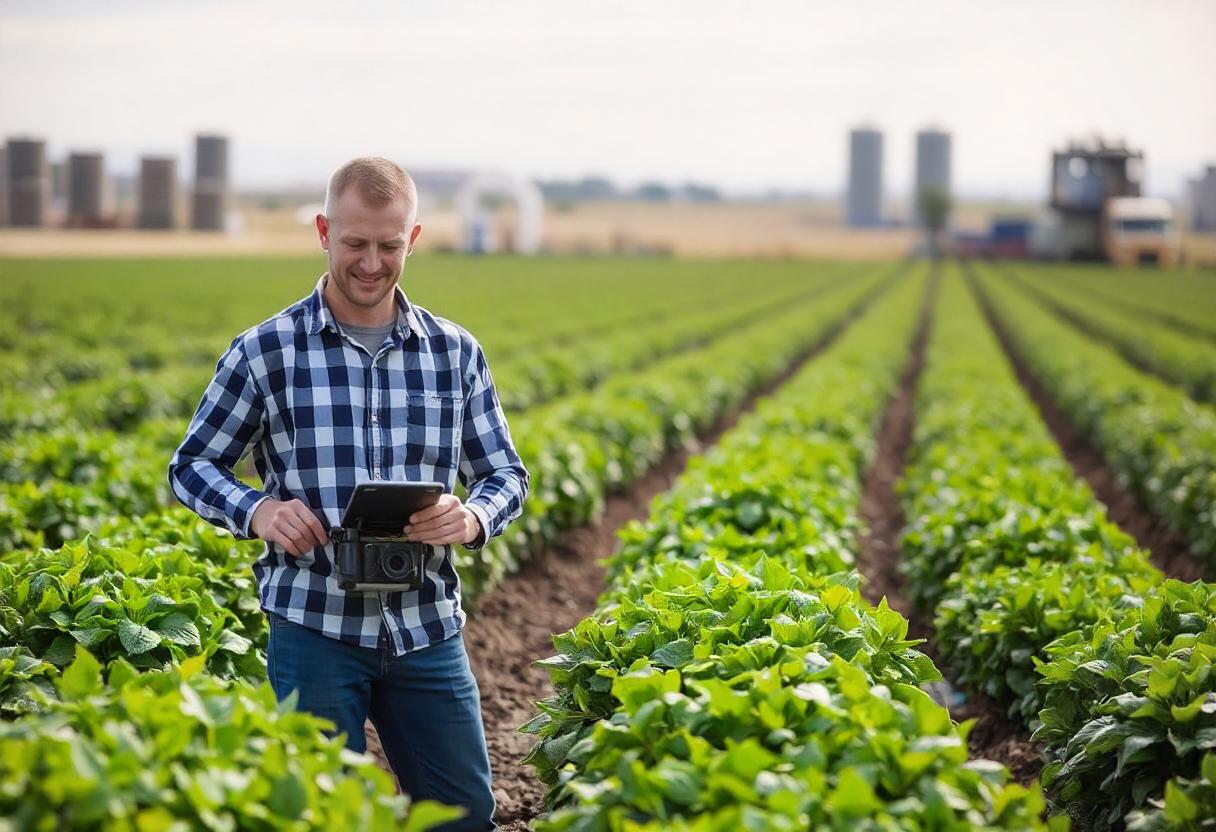
Introduction
Precision agriculture, often referred to as “smart farming,” represents a transformative approach to farming that leverages technology and data to enhance crop production and farm management. This innovative method combines various tools and techniques to optimize field-level management regarding crop farming. By utilizing detailed, real-time data, precision agriculture aims to improve the efficiency of farming practices, reduce waste, and ultimately increase crop yields.
Historical Background
The roots of precision agriculture can be traced back to the late 20th century when the integration of GPS technology and data analytics began to take shape. Early adopters used basic GPS systems for guidance in machinery and to map fields. As technology advanced, so did the methods and tools available, leading to the sophisticated precision agriculture systems we see today.
Core Technologies in Precision Agriculture
- Global Positioning Systems (GPS): GPS technology is central to precision agriculture. It allows farmers to map and monitor fields with high accuracy. GPS-guided machinery can perform tasks such as planting, fertilizing, and harvesting with precise location data, minimizing overlap and gaps.
- Geographic Information Systems (GIS): GIS is used to analyze spatial and geographic data. By integrating data layers—such as soil types, weather patterns, and crop health—GIS helps farmers make informed decisions about field management.
- Remote Sensing: This technology involves the use of satellites or drones to collect data about crops and soil from above. Remote sensing provides valuable insights into crop health, soil moisture levels, and nutrient deficiencies.
- Variable Rate Technology (VRT): VRT allows farmers to apply inputs like fertilizers and pesticides at variable rates across a field. By tailoring applications to specific areas based on need, VRT reduces waste and improves efficiency.
- Unmanned Aerial Vehicles (UAVs): Drones equipped with high-resolution cameras and sensors offer real-time monitoring and imaging of crops. They can identify issues such as pest infestations, disease outbreaks, and irrigation problems.
- Soil Sensors: These sensors monitor soil conditions, including moisture levels, temperature, and nutrient content. The data collected helps farmers adjust irrigation and fertilization practices to suit current soil conditions.
- Data Analytics and Artificial Intelligence (AI): Advanced analytics and AI algorithms process large volumes of data to provide actionable insights. These tools can predict crop yields, identify trends, and suggest optimal farming practices based on historical and real-time data.
Benefits of Precision Agriculture
- Increased Efficiency: By using data-driven insights, precision agriculture optimizes resource use, reducing waste and improving the overall efficiency of farming operations. For example, precise application of fertilizers and pesticides minimizes excess use, lowering costs and environmental impact.
- Enhanced Crop Yields: With accurate data on soil and crop conditions, farmers can make more informed decisions that lead to better crop management and increased yields. Targeted interventions can address specific issues, improving plant health and productivity.
- Cost Savings: Precision agriculture reduces input costs by minimizing the over-application of resources. Accurate application of fertilizers, seeds, and pesticides ensures that resources are used only where needed, leading to significant cost savings.
- Environmental Sustainability: By optimizing resource use and reducing waste, precision agriculture contributes to more sustainable farming practices. It helps minimize the environmental footprint of farming activities, promoting soil health and reducing runoff and pollution.
- Better Decision-Making: Access to detailed, real-time data allows farmers to make informed decisions about field management. This leads to better planning and more effective responses to changing conditions, enhancing overall farm management.
Challenges and Considerations
- Cost of Implementation: The initial investment in precision agriculture technologies can be high. Farmers need to weigh the costs of purchasing and maintaining equipment against the potential benefits.
- Data Management: Managing and interpreting the vast amounts of data generated by precision agriculture tools can be challenging. Farmers need to ensure they have the skills or support to analyze and act on the data effectively.
- Technology Integration: Integrating various technologies and systems can be complex. Ensuring that different tools work together seamlessly requires careful planning and sometimes custom solutions.
- Privacy and Security: The collection and storage of farm data raise concerns about privacy and security. Farmers must take steps to protect their data from unauthorized access and misuse.
Future Trends
The future of precision agriculture promises even greater advancements as technology continues to evolve. Emerging trends include:
- Integration of Internet of Things (IoT): IoT devices will provide even more granular data on farm conditions, enhancing the capabilities of precision agriculture systems.
- Advancements in AI and Machine Learning: AI algorithms will become more sophisticated, offering even more precise predictions and recommendations for farm management.
- Increased Use of Robotics: Robotics will play a larger role in automating tasks such as planting, weeding, and harvesting, further improving efficiency and reducing labor costs.
Precision agriculture represents a significant leap forward in farming practices, combining technology and data to optimize field management and enhance productivity. By leveraging tools like GPS, GIS, remote sensing, and AI, farmers can make more informed decisions, improve efficiency, and contribute to environmental sustainability. Despite challenges, the continued advancement of technology and its integration into agricultural practices holds the promise of a more productive and sustainable future for farming.